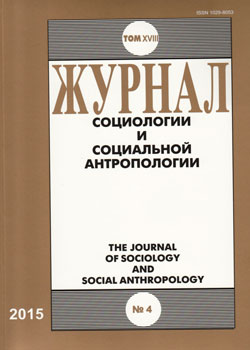Urban Infrastructure of Child Care: the Real and the Ideal Spaces
Keywords:
city, public space, family policy, childhood, middle class
Abstract
The article deals with the question of how middle class mothers from St. Petersburg perceive urban space. The author assumes that the organization of the urban environment (playgrounds for children, places of leisure, transport accessibility of urban facilities, availability of ramps for baby carriage) to a large extent determines the everyday life of citizens with children. Urban space is an object of urban and municipal policy of landscaping, transportation, cultural policy, policy for the preservation of cultural heritage. At the same time the city is a matter of daily practical adaptation, redefinition of space meanings and struggle for the city, which dwellers practice while making urban infrastructure tailored to their own needs and tastes. At the theoretical level the article is based on sociology of everyday life, works on gender analysis of family policy and urban sociology. Drawing on materials of the empirical research (analysis of interviews with mothers and official documents), the author shows the specificity of actions and meanings of actors involved in the formation of the urban environment: the state, the market and the parents. She analyzes the assessments of middle-class parents of the various initiatives of the city authorities and businesses and discusses the issues related to the contribution of urban policies and spatial infrastructure for family policy, in particular the policy to balance family and work. The author shows that career-oriented mothers are critical to the organization of St. Petersburg’s space; they want to have the potential to increase their life chances and to minimize the “motherhood costs”. For these women, the birth of a child leads to radical changes of their lifestyle and career breaks. Therefore, they claim that the policy of family friendly infrastructure would allow them to combine work with motherhood, and to attend public spaces.
Published
2015-05-20
How to Cite
Shpakovskaya, L. (2015). Urban Infrastructure of Child Care: the Real and the Ideal Spaces . ZHURNAL SOTSIOLOGII I SOTSIALNOY ANTROPOLOGII (The Journal of Sociology and Social Anthropology), 18(4), 111–125. Retrieved from http://jourssa.ru/jourssa/article/view/418
Section
Urban Sociology

